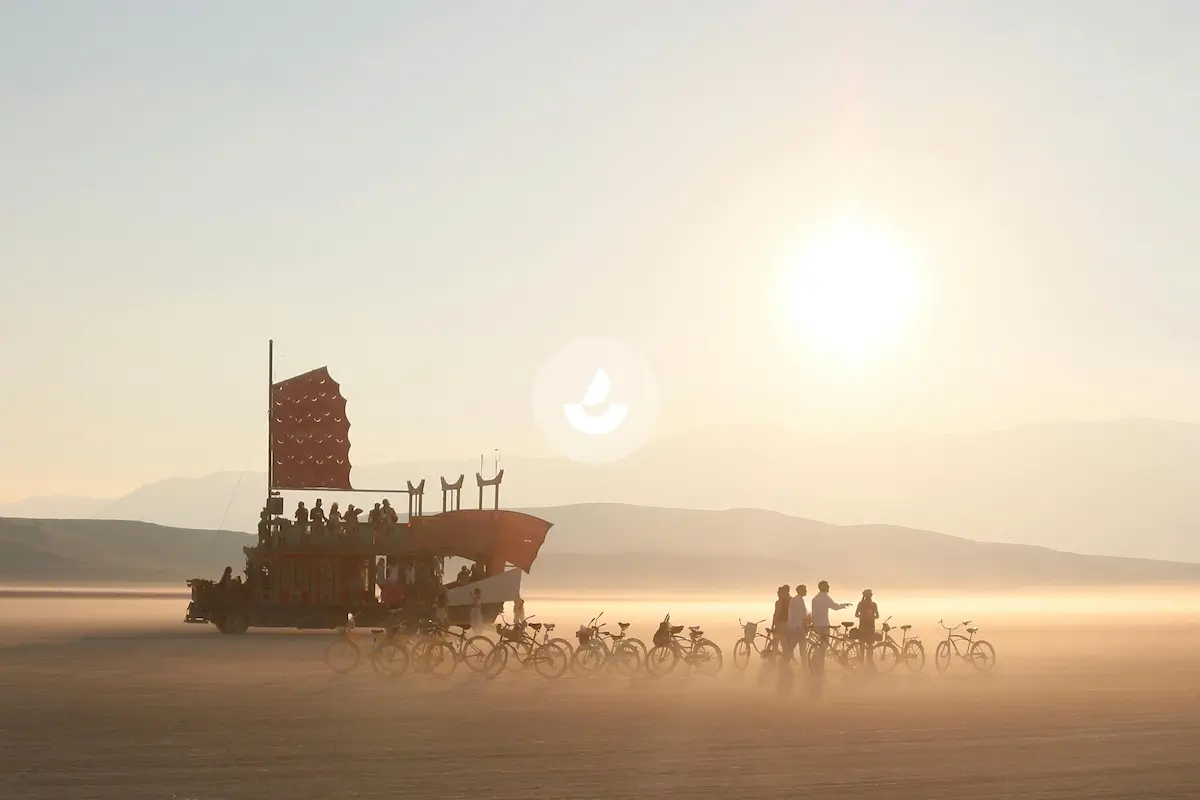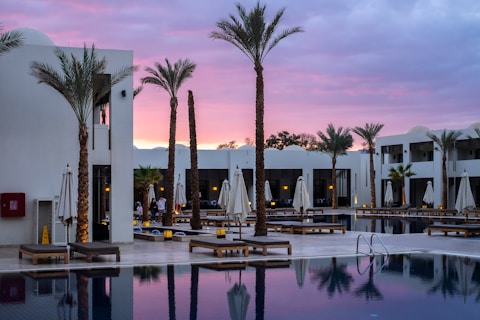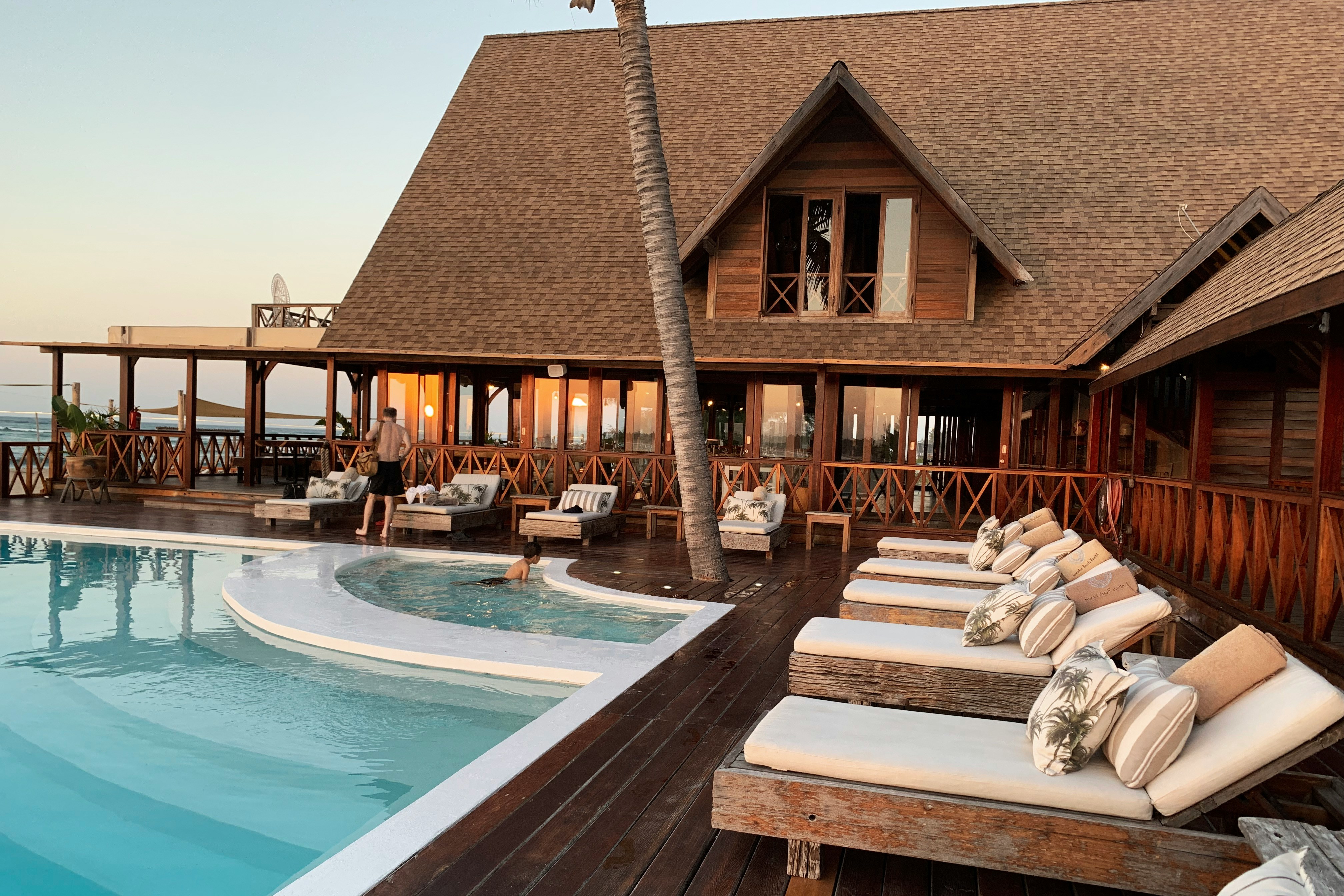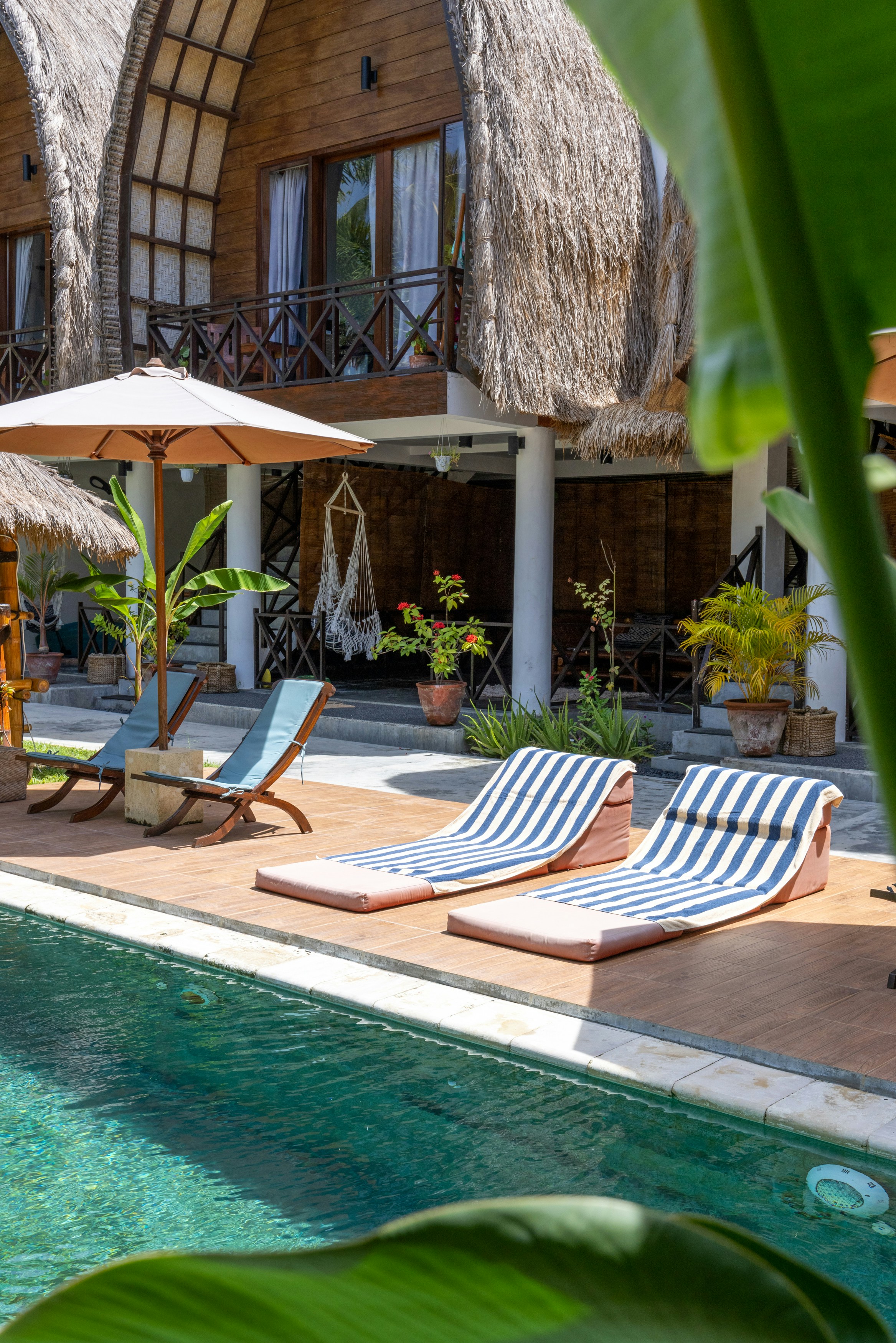Isurumuni Royal Temple
Isurumuni Royal Temple things to do, attractions, restaurants, events info and trip planning
Plan your stay
Posts
The Isurumuniya Viharaya is situated close to the Tisa Wewa. It is renowned for its stone carvings of which the most famous is one known as the “Isurumuniya Lovers”. The other carvings are of the Horseman, Elephant Pond and the Royal Family. The Temple was originally known as the Meghagiri Vihara and it is believed that the Vessagiri Vihara which is located close to it is the actual Isurumuniya Vihara. The Temple The Isurumuniya Viharaya was constructed during the reign of Devanampiya Tissa who governed in Anuradhapura, the country’s capital. During his reign 500 high caste children were ordained, and Isurumuniya was built as a monastic complex to house all of them. Thereafter it was renovated by King Kasyapa (473 – 491 AD) who renamed it “Boupulvan Kasubgiri Radmaha Vehera” – a combination of his name along with his two daughters’. Connected to the Temple is a cave with a cliff above it. A small Dagoba was built on this cliff during a later period. At the picturesque entrance to Isurumuniya a rock can be seen either side of a crevice, and this rock seems to rise out of a pond. Isurumuniya Lovers (Pem Yuwala) The Isurumuniya Lovers To the north of Isurumuniya lies the Ranmasu Uyana or Royal Pleasure Garden. This is a significant location as it is believed that Prince Saliya met Asokamala, his future bride, in this very garden all those centuries ago. The sculpture known as the “Isurumuniya Lovers” is a Gupta style carving of the 6th Century. It shows a woman seated on a man’s lap, lifting a finger in what some people interpret as a manifestation of her coyness. A certain mystery surrounds the carving as no record exists of exactly whom the two images portray. Locals believe the couple depicted in the carving are that of Prince Saliya and Asokamala. Another legend has it that it is the Hindu god Shiva and goddess Parvati depicted in the famous carving. Isurumuniya - Horse and manIt is possible that the figures represent Prince Saliya (son of King Dutugemunu) and Asokamala, the maiden of low caste he loved. According to historical reports he eventually gave up the throne for her. Another legend has it that it is Shiva and Parvati depicted in the famous carving. A Sense of Romance Isurumuniya - Royal Family Stone CarvingThe carving of the “Isurumuniya Lovers” has sparked many legends over the centuries. But each one seems to have a happy ending and the legends live on. Step into this romantic setting and share this ancient love story as Tourslanka takes you through this unforgettable experience. Other Rock Carvings At the picturesque entrance to Isurumuniya a rock can be seen on either side of a crevice, and this rock seems to rise out of a pond. Just above the water level are carvings of bathing Elephants. To the side of the pool is a flight of stairs. Another unique rock carving is found at the top. This time of a man seated in a regal position with the head of a horse behind him. This figure is believed to be of Parjanya, the God of rain. This has led to the belief that the Elephants in the carving below represent rain clouds. Therefore, archaeologists over the centuries have assumed that the King used this location to perform rituals to the God of rain. The carving of the famous “Isurumuniya Lovers” has sparked many legends over the centuries. But each one seems to have a happy ending and the fables live on. It is truly a place where art takes on a different dimension. Step into this romantic and serene setting as Tourslanka takes you through an unforgettable experience.
Gishan Bandara
00
Isurumuniya Temple Anuradhapura, the first capital of the Helas, founded by King Pandukabhaya around 380 BC, is one of the oldest cities in the world. Also, Anuradhapura, which had been the capital for the longest time in Hela history, is also the city that claims the largest number of historical monuments that have been uncovered in Sri Lanka. Even Buddhist devotees on the Anuradhapura Atamasthana pilgrimage miss many of these historic shrines. But although it is a shrine that does not belong to the Anuradhapura Atamasthana, Isurumuniya Raja Maha Vihara is a place that almost all of these people go to with devotion. Isurumuniya is a place where Mihindu Ma Thero lived. It seems that at that time this was known as 'Meghagiri' temple. The wedding garden of the king named Meghawana, where ceremonies were held to get rain, is also located nearby. King Devanam Piyatissa built this temple for five hundred children of the Vaishya caste, including one of his sons-in-law, Prince Aritta, who was ordained by Mihindu Thero. In the genealogy books, this temple is known as 'Issarasamanarama', 'Kasupgiri Vehera' etc. Isurumuni holds a very important place in Buddhist history. By the fourth century, this temple belonged to Abhayagiri. The tooth relic of Lord Buddha brought to Sri Lanka was first deposited in this Isurumuniya temple. Isurumuni temple has two temple houses. A spectacular small temple called Len Viharaya is located above Mihindu Pond. Built on a platform in front of the rock, there are steps made of stone to enter this temple. There are two watch-stones on either side of the steps and carved lame stones and a moonstone lamp in front. It is said that the uluvassa of the temple, the dragon pavilion, the seat and the Buddha statue are carved from the same stone. Opinions have been expressed that this is the first Buddha statue carved out of stone in Sri Lanka. This idol is treated with plaster and painted. Another dragon pantheon is completed behind the idol. On the walls of the temple are Suvisi commentary paintings. The other temple was built recently. Here, there is a sitting statue, a standing statue and an odd statue of Lord Buddha. The rock cave known as Mihindu Cave can be seen at the end of the temple. This cave, which is about 20 feet long and 10 feet high, has been dug and prepared. In the caves there is a stone seat where Mihindu Thero is believed to have slept. The temple has a number of recently painted frescoes depicting the history of Isurumuni.
Ayeshan madushanka
00
The Isurumuniya Viharaya was constructed during the reign of Devanampiya Tissa who governed in Anuradhapura, the country’s capital. During his reign 500 high caste children were ordained, and Isurumuniya was built as a monastic complex to house all of them. Thereafter it was renovated by King Kasyapa (473 – 491 AD) who renamed it “Boupulvan Kasubgiri Radmaha Vehera” – a combination of his name along with his two daughters’. Connected to the Temple is a cave with a cliff above it. A small Dagoba was built on this cliff during a later period. At the picturesque entrance to Isurumuniya a rock can be seen either side of a crevice, and this rock seems to rise out of a pond. At the picturesque entrance to Isurumuniya a rock can be seen on either side of a crevice, and this rock seems to rise out of a pond. Just above the water level are carvings of bathing Elephants. To the side of the pool is a flight of stairs. Another unique rock carving is found at the top. This time of a man seated in a regal position with the head of a horse behind him. This figure is believed to be of Parjanya, the God of rain. This has led to the belief that the Elephants in the carving below represent rain clouds. Therefore, archaeologists over the centuries have assumed that the King used this location to perform rituals to the God of rain. The carving of the famous “Isurumuniya Lovers” has sparked many legends over the centuries. But each one seems to have a happy ending and the fables live on. It is truly a place where art takes on a different dimension. Step into this romantic and serene setting as Tourslanka takes you through an unforgettable experience. Parking is available Access to location is very easy Public toilets are available but not in good quality
Manura Gajanayake
00
The ancient Meghagiri Vihara, currently known as the Isurumuni Vihara, was constructed by King Devanampiya Tissa (307 BC to 267 BC) during his rule in the ancient Sri Lankan capital of Anuradhapura. After 500 children from high-caste families were ordained, the Isurumuniya Vihara was built to provide them with a place to reside. Later, King Kasyapa I (473–491 AD) renovated the temple, naming it "Boupulvan, Kasubgiri Radmaha Vehera" after his two daughters and himself. The viharaya is connected to a cave, with a cliff above it, and a small stupa is built on top. The construction of this stupa is believed to belong to a more recent period. Notably, on both sides of a cleft in the rock, which appears to rise from a pool, the figures of elephants have been carved. There is also the carving of a horse on the rock. The famous Isurumuniya lovers' sculpture has been relocated from another site and placed at this temple. A few yards away from the vihara lies the Ranmasu Uyana, adding to the historical significance of this area. In my view This historical temple, located near the Tissa Wewa in Anuradhapura, Sri Lanka, is famous for its iconic stone sculptures. It holds significant historical value, dating back to ancient times. Some believe that the temple served as a place for kings to relax, while others argue that it was more of a peaceful, spiritual site than a royal retreat. Given its proximity to the Royal Park and Tissa Wewa, both suggestions hold merit. Additionally, the sculptures at the temple are believed to represent members of royal families and their loved ones. Visitors to this site will be able to admire the intricately carved sculptures, showcasing the remarkable craftsmanship of the era.
Buddhi Chathuritha Gunawardana
00
🏰💕 **A Tale of Love: Prince Saliya & Asokamala** 🌟🌸 This place resonates with the poignant love story of Prince Saliya, who chose love over his throne to be with his low-caste lover, Asokamala. The stone carvings of the loving couple are a captivating sight and a testament to their extraordinary love. 🏺💑 Additionally, the site is renowned for the famous "Isurumuniya Lovers" stone carvings, now housed in the archeological museum within the temple. 🗿🏛️ Before entering, visitors must leave their shoes and remove their hats as a sign of respect. However, the temperatures can become unbearable during lunchtime, especially since the place is built on a rock, intensifying the heat. To avoid discomfort, it's advisable to visit in the early morning or evening. 🕰️🔆 From the top of the rocks, one can enjoy beautiful views of the nearby tank, Thissa Wewa. And don't forget to climb up to the bunt of Thissa Wewa tank to have amazing feel. 🏞️🚣♀️ However, it's important to note that there are no facilities for wheelchair accessibility, and security and donations collection occur at the entrance. The place tends to get crowded on Poya Days. 🚷💰 With a sizeable car park available, visitors can park their vehicles free of charge but should be cautious not to park near trees due to the abundance of mischievous monkeys who might cause damage. 🚗🐒 For history enthusiasts and romantics alike, this place offers a unique experience worth cherishing. 💖🏰 If you found this review helpful, please consider marking it as such to encourage more elaborative reviews. 🙏😊
Lakshitha Samod
00
Beautiful ancient temple in anuradhapura. popular for carvings in stones. Isuruminiya lovers, Elephant pond, man and horse head and the royal family. The ancient Meghagiri Vihara or Meygiri Vihara is presently identified as the Isurumuni Vihara. It was built by King Devanampiya Tissa (307 BC to 267 BC) who ruled in the ancient Sri Lankan capital of Anuradhapura. After 500 children of high-caste were ordained, Isurumuniya was built for them to reside. King Kasyapa I (473-491 AD) again renovated this viharaya and named it as "Boupulvan, Kasubgiri Radmaha Vehera" giving the names of his 2 daughters and his name. There is a viharaya connected to a cave and above is a cliff. A small stupa is built on it. It can be seen that the constructional work of this stupa belongs to the present period. Lower down on both sides of a cleft, in a rock that appears to rise out of a pool, have been carved the figures of elephants. On the rock is carved the figure of a horse. The carving of Isurumuniya lovers on the slab has been brought from another place and placed it there. A few yards away from this vihara is the Ranmasu Uyana. he Royal Family carving is carved on a Granite plate.There are five human figures carved on this plate. The human figure in the center is King Dutugamunu, who has a tall crown on his head and a "puna noola" around his chest. At his left are another two human figures. They are fanning him with a "Wijinipath"
Duresh Weerasekara
00
Nearby Attractions Of Isurumuni Royal Temple
Ranmasu Uyana (Royal Park)
Thissa Wewa
Star Gate - Ranmasu Uyana
Vessagiriya | වෙස්සගිරිය
Pond - Isurumuniya Temple

Ranmasu Uyana (Royal Park)
4.6
(295)
Click for details

Thissa Wewa
4.6
(233)
Click for details

Star Gate - Ranmasu Uyana
4.7
(189)
Click for details

Vessagiriya | වෙස්සගිරිය
4.7
(171)
Click for details
Basic Info
Address
89MR+R7R, Anuradhapura, Sri Lanka
Map
Phone
+94 71 777 7115
Call
Reviews
Overview
4.7
(1.2K reviews)
Ratings & Description
cultural
accessibility
Description
Isurumuniya is a Buddhist temple situated near to the Tissa Wewa in Anuradhapura, Sri Lanka. There are four carvings of special interest in this Vihara. They are the Isurumuniya Lovers, Elephant Pond and The Royal Family.
attractions: Ranmasu Uyana (Royal Park), Thissa Wewa, Star Gate - Ranmasu Uyana, Vessagiriya | වෙස්සගිරිය, Pond - Isurumuniya Temple, restaurants:

- Please manually select your location for better experience




